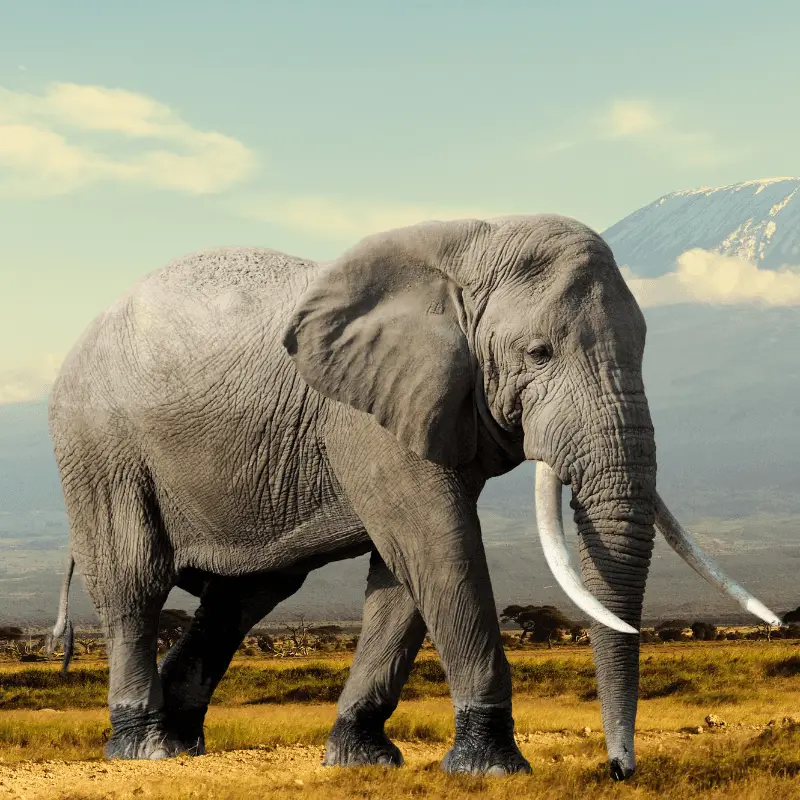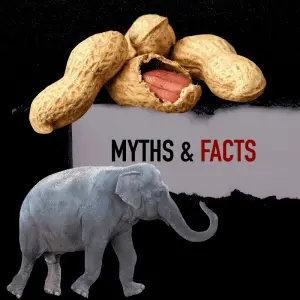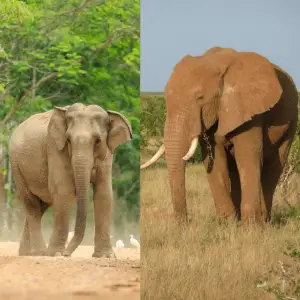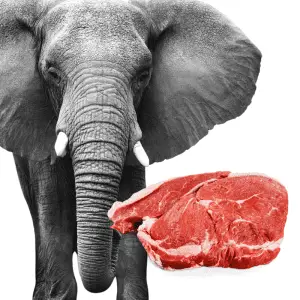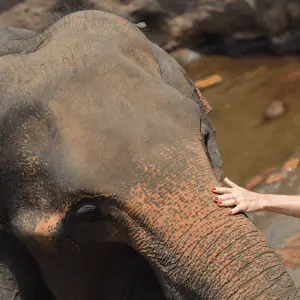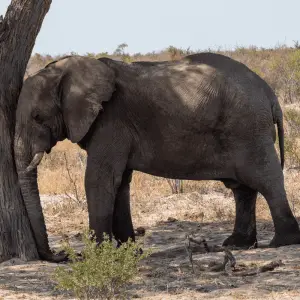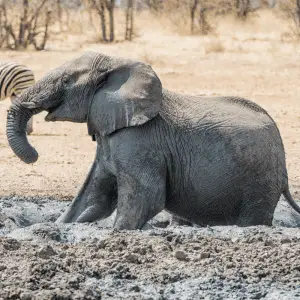The beautiful tusks are one of an elephant’s most noticeable physical features. Apart from their massive body and long trunk, the tusks make the elephant look more elegant and unique.
Some elephants have tusks, but not all of them do. Male and female African elephants will have tusks, but only some male Asian elephants will grow tusks later in life.
The Asian male elephants have short tusks. These tusks are known as tushes. What differs from the African elephants is that they do not have any pulp inside.
What Are the Tusks?
Typically, the tusks in other mammals are their elongated canine teeth. However, when it comes to elephants, their tusks are their long incisors.
Humans have incisors as well that we use for biting down food. However, the incisors of the elephants tend to keep on growing throughout their life.
These gentle giants use their tusks to complete a whole range of various activities. Elephants use their tusks to strip bark from trees, dig holes in the ground, and fight. Sometimes the elephants also rest their trunks on their tusks.
Elephants Tusk Location
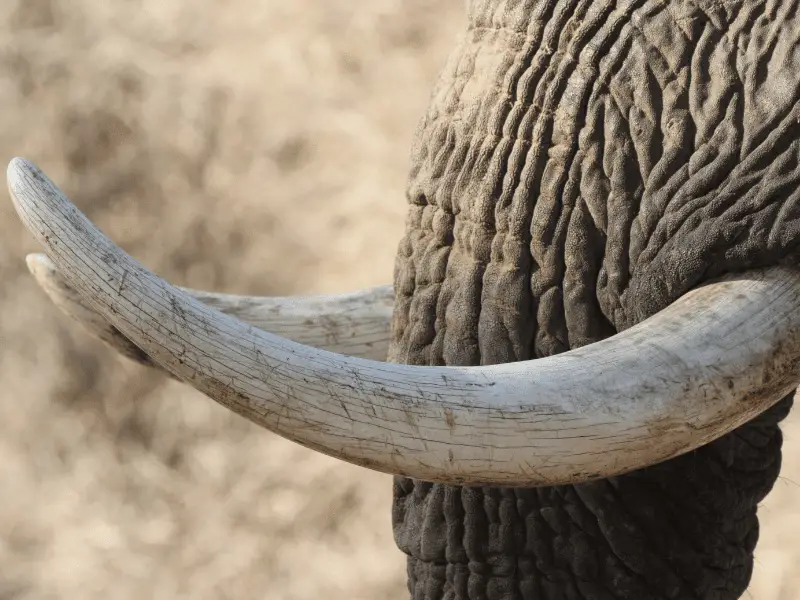
The tusk of an elephant extends deep within its upper jaw. One-third of the tusk is deeply embedded inside the elephant’s head and can not be seen outside. The embedded part is the pulp cavity, which is made of blood vessels, living tissues, and nerves.
What are tusks made of?
Cross-sections of elephant tusks differ significantly from other tusks of various mammals. The tusk’s visible part, also known as Ivory, is made of dentine. This dentine is coated with a couple of layers of enamel. The Crisscross lines inside the Ivory create multiple Diamond shapes inside the tusk.
Do tusks stop growing?
The elephant’s tusk never stops growing. Some of the Bull elephants showcase enormous examples of tusks. However, the tusk size has decreased significantly over the past hundred years. The researchers think that as humans started hunting elephants for their Ivory, their significant tusk gene became increasingly rare.
Elephant Tusk Sizes
| Species | Tusk Size |
|---|---|
| African Bush Elephant | Up to 8ft |
| African Forest Elephant | Up to 3ft |
| Asian Elephant | Up to 5ft |
| Indian Elephant | Up to 6ft |
What do elephants use their tusks for?
Elephants use their massive tusks to fulfil various purposes.
- Elephants in the wild often use their tusks to lift and move heavy objects.
- Elephants use their tusks to collect food and strip bark from the trees.
- They often use the tusks as a formidable weapon as well. During the mating season, the competing bull elephants often fight with each other using their tusks.
- Elephants use their tusks against predators like tigers and lions.
- During the summer, elephants often use a tusk on the ground while searching for water.
Recommended Read: How does an elephant drink water?
Are there any elephants without tusks?
As we have mentioned earlier, some elephants are born without any tusks. Even though tusks are an important physical feature of an elephant, not all elephants have them.
For example, most Asian elephants do not develop tusks in their life. Female Asian elephants, in particular, do not ever develop throughout their life, while a small number of male elephants do.
Even if a female Asian elephant develops tusks, its size will be much smaller than that of the male.
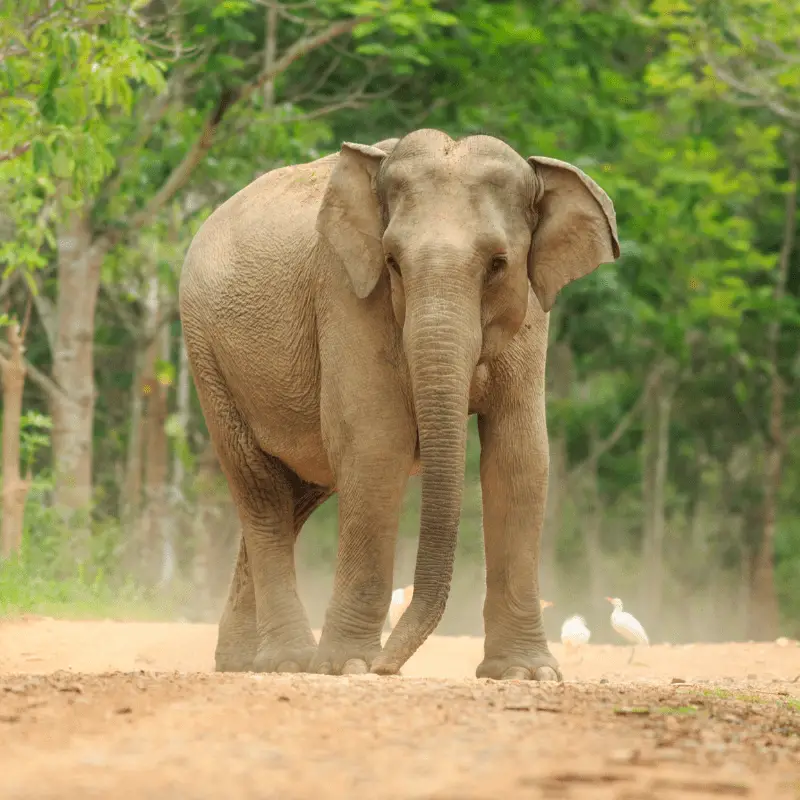
Researchers have found that about 2% of African elephants do not ever develop tusks. However, most African elephants develop tusks. Even though the tusks are considered an important physical feature of these gentle giants, elephants can survive without their tusks if removed for health reasons without causing severe damage to the animal.
Tusks are teeth with nerve endings and soft tissue attached to them. That means the tusk removal procedures can be pretty painful for the elephant. Even though the elephant tusks do not stop growing throughout their lives, they cannot return their tusks once removed. That means once the tusk gets removed, the purposes it solves, such as defending and feeding themselves, can also get impacted.
Killing Elephants for Their Tusk
For centuries humans have been attracted by the elegance and beauty of elephant tusks. Unfortunately, this attraction has caused the death of thousands of elephants across the globe. Ivory is still one of the most precious materials in the world.
The hunters often target the largest and oldest animals as they have more extensive and valuable tusks. It has created an imbalance in the animal world.
Hunting down the most prominent and largest animal is not only tragic for the individual elephants but also impacts the entire population of elephants.
Like humans, the oldest and the wisest of elephants play a significant role in protecting and transferring knowledge from one generation of elephants to the next.
The older matriarchs can distinguish danger more often and accurately than the younger ones.
The researchers have also pointed out that the rampant killing of elephants for their tusks has led to elephants developing smaller tusks.
Today’s elephants are developing a significantly smaller tusks than they did just a couple of decades ago. Plus, in the area where illegal elephant killing is the most common, many elephants have stopped developing tusks altogether.
In a regular population of African elephants, you will expect three tuskless elephants in every hundred. However, researchers have pointed out that in an elephant population in Mozambique, tuskless elephants have reached 32%.
This tuskless evolution has helped some elephants avoid being targeted by poachers. That means these elephants are getting a better chance of survival and breeding. This explains why the number of tuskless animals is increasing significantly in the African elephant population.
The good news is that elephant populations can flourish when given a protected space for roaming. Across Asia and Africa, several conservation projects provide excellent results. All in all, just by reducing the number of elephants getting killed for their tusks, we can easily ensure this species’ safety.

